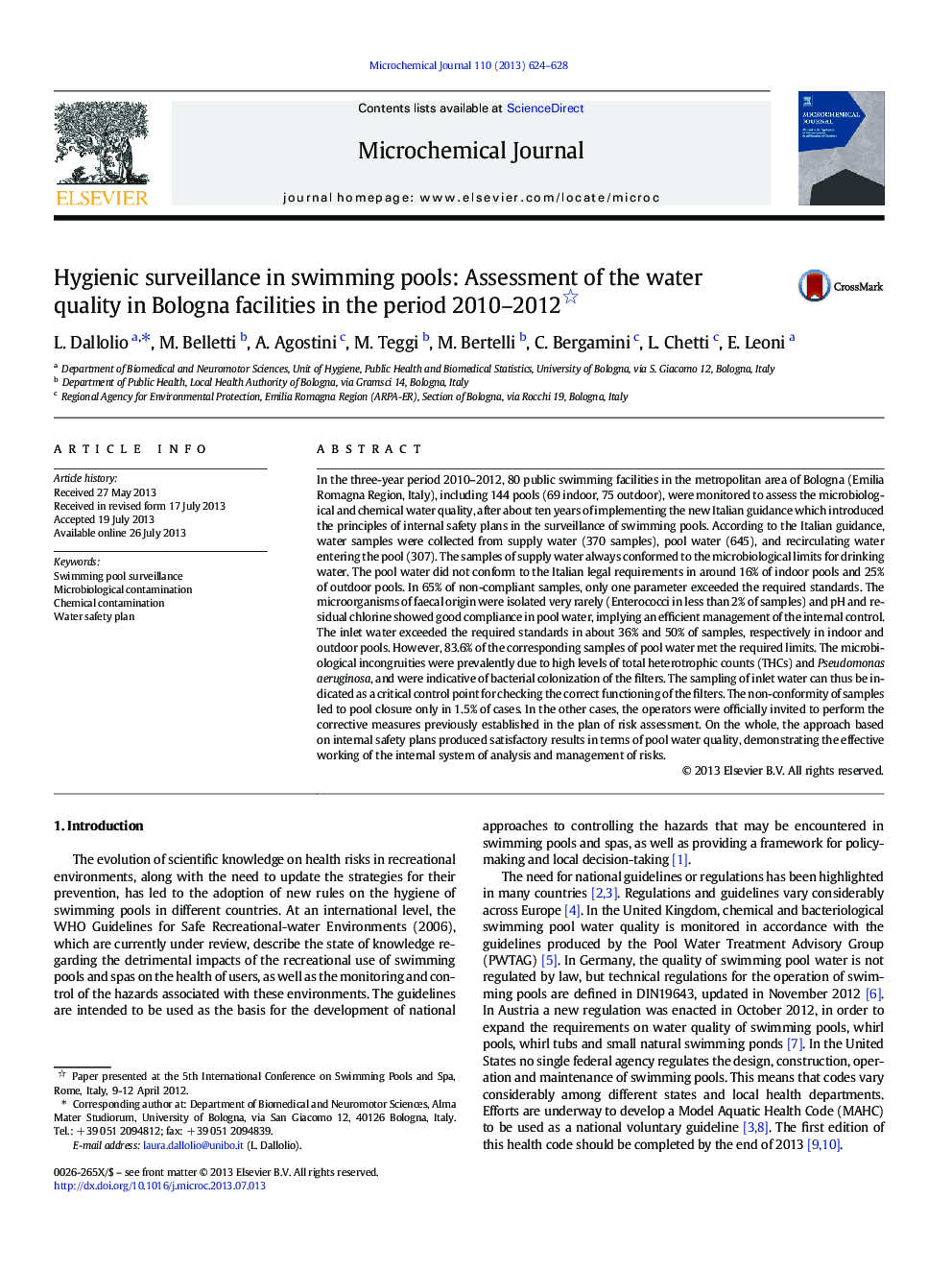| Article ID | Journal | Published Year | Pages | File Type |
|---|---|---|---|---|
| 7644078 | Microchemical Journal | 2013 | 5 Pages |
Abstract
In the three-year period 2010-2012, 80 public swimming facilities in the metropolitan area of Bologna (Emilia Romagna Region, Italy), including 144 pools (69 indoor, 75 outdoor), were monitored to assess the microbiological and chemical water quality, after about ten years of implementing the new Italian guidance which introduced the principles of internal safety plans in the surveillance of swimming pools. According to the Italian guidance, water samples were collected from supply water (370 samples), pool water (645), and recirculating water entering the pool (307). The samples of supply water always conformed to the microbiological limits for drinking water. The pool water did not conform to the Italian legal requirements in around 16% of indoor pools and 25% of outdoor pools. In 65% of non-compliant samples, only one parameter exceeded the required standards. The microorganisms of faecal origin were isolated very rarely (Enterococci in less than 2% of samples) and pH and residual chlorine showed good compliance in pool water, implying an efficient management of the internal control. The inlet water exceeded the required standards in about 36% and 50% of samples, respectively in indoor and outdoor pools. However, 83.6% of the corresponding samples of pool water met the required limits. The microbiological incongruities were prevalently due to high levels of total heterotrophic counts (THCs) and Pseudomonas aeruginosa, and were indicative of bacterial colonization of the filters. The sampling of inlet water can thus be indicated as a critical control point for checking the correct functioning of the filters. The non-conformity of samples led to pool closure only in 1.5% of cases. In the other cases, the operators were officially invited to perform the corrective measures previously established in the plan of risk assessment. On the whole, the approach based on internal safety plans produced satisfactory results in terms of pool water quality, demonstrating the effective working of the internal system of analysis and management of risks.
Related Topics
Physical Sciences and Engineering
Chemistry
Analytical Chemistry
Authors
L. Dallolio, M. Belletti, A. Agostini, M. Teggi, M. Bertelli, C. Bergamini, L. Chetti, E. Leoni,
